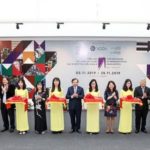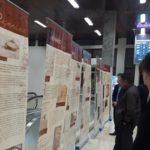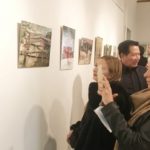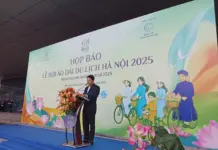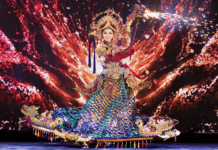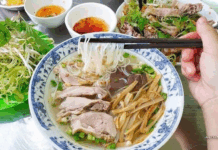On display are over 20 publications chosen among more than 1,000 works published during the first development stage of Quốc Ngữ in the late 19th century and the first half of the 20th century, that the University Library of Languages and Civilisations (BULAC) has collected so far.
An exhibition entitled “Chữ Quốc ngữ, a fundamental factor in the renewal of Vietnamese culture from 1860 to 1945” will be open until May 31. It showcases the first novels of Vietnam written in Western style such as “Thay Lazaro Phien” (Teacher Lazaro Phien) by Nguyen Trong Quan published in 1887 and “Chuyện đời xưa” (The story of old life) released in 1866, as well as translated versions of some famous Chinese and French works such as “The Story of Three Kingdoms” (1909) and “The Miserables” (1926). Additionally, the exhibition displays the first issues of Gia Dinh newspaper published in July 1865 and Nam Phong magazine (1923). According to Nguyen Thi Hai, who is in charge of the exhibition, BULAC’s Vietnamese font is one of the oldest collected and preserved in France.
She said Vietnamese has been taught in Paris since 1869 at the Sorbonne University. It was not until the 1871-1872 period that this subject was officially included in the curriculum at the School of Oriental Languages, now the National Institute for Oriental Languages and Civilisations (INALCO).
At that time, the institute worked with scholars from southern Vietnam, such as Truong Vinh Ky and Truong Minh Ky, to bring Vietnamese books and newspapers to France. At the beginning of the 20th century, the French government supported the spread of Chữ Quốc ngữ, so many Vietnamese publications were collected at the Interuniversity Library of Oriental Languages (BIULO) and the French School of the Far East (EFEO). Those books were later transferred to BULAC.
The cooperation between western Catholic missionaries and Vietnam’s first Catholic scholars gave birth to Quốc ngữ. Its use was initially discouraged by Confucian scholars, but the Duy Tân (‘Renovation’) movement changed this view. Vietnamese intellectuals then began to recognise Quốc ngữ’s potential value as a medium for disseminating patriotic and anti-colonial ideas. As a result, they started translating foreign works and writing articles and literature in Quốc ngữ. Easier to read and write, Quốc ngữ gradually gained popularity and is now the official writing system in Vietnam.
A Glimpse of Hanoi’s Old Quarter
Recently, the Management Board of Hanoi’s Old Quarter cooperated with the city of Toulouse to open an exhibition named “Ke cho – Pho co” (City Dwellers – Old Quarter) at Hanoi’s Old Quarter Cultural Exchange Centre to depict the formation and development of Hanoi’s Old Quarter in the past 1000 years.

